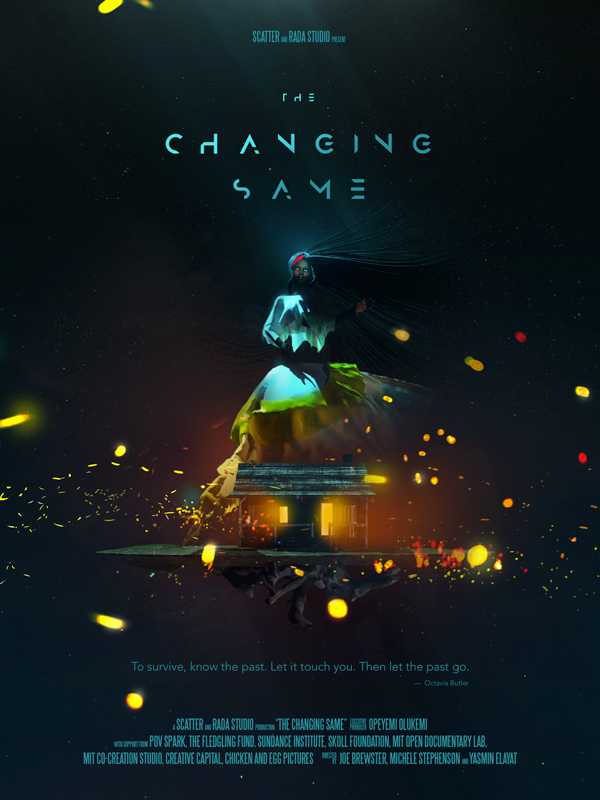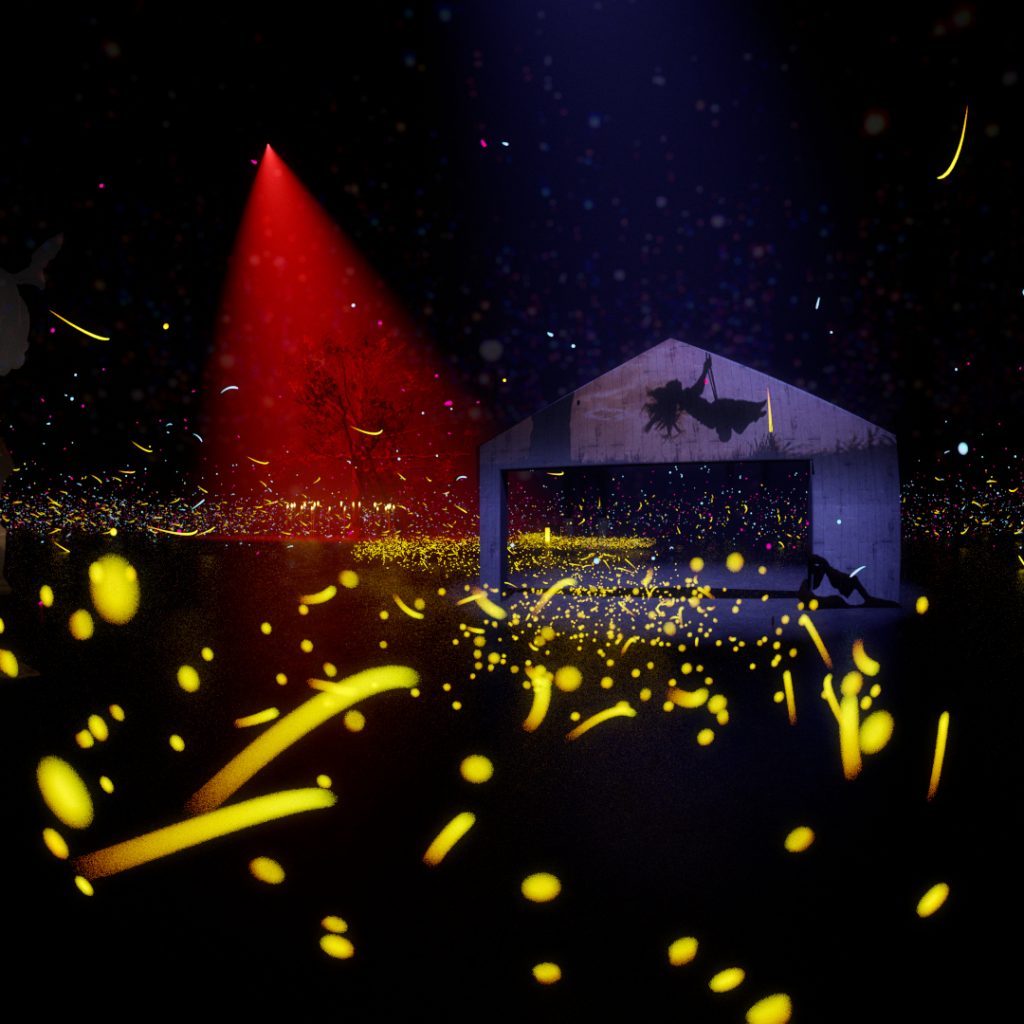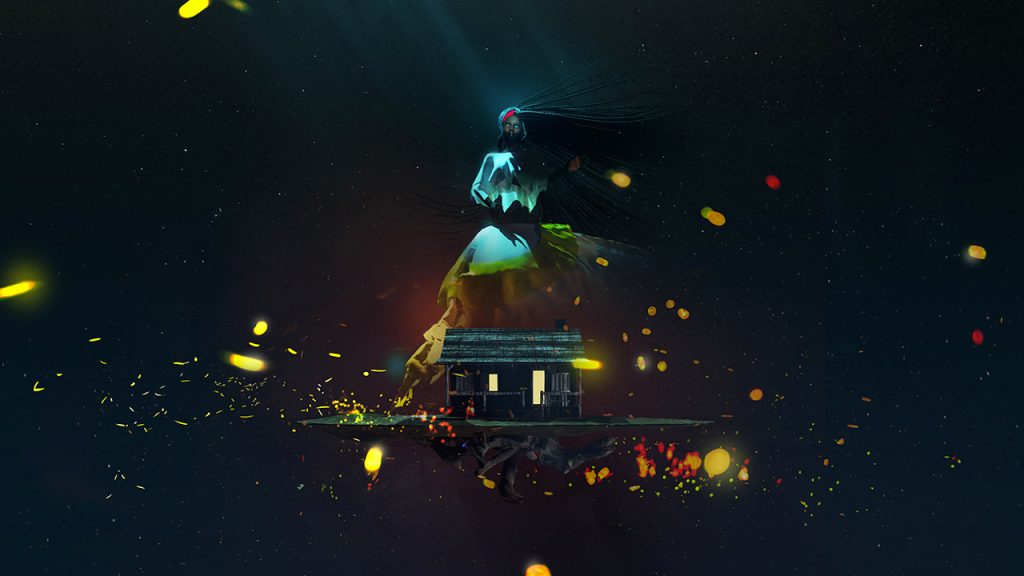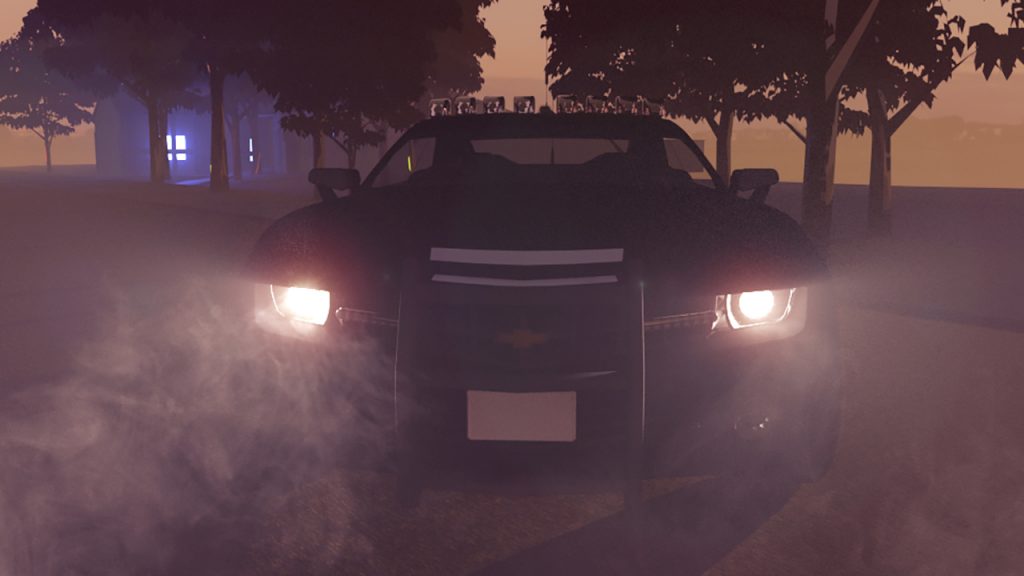THE CHANGING SAME is an virtual reality experience, created using volumetric filmmaking, that reflects on the history of the Black American community to highlight its effects on the present. Will you, as a user, join the rewriting of this narrative or will you bury it all and walk away?
One of the most discussed decisions of the past year was the temporal removal of Gone with the Wind from HBO Max. In the middle of the protests against anti-Black racism and police brutality, the movie’s “racist depictions” seemed to encourage the perpetration of ethnic and racial prejudices and HBO Max declared that “to keep this title up without an explanation and a denouncement of those depictions would be irresponsible” (x).
We are not here to discuss the rightness or wrongness of this specific choice, nor are we here to share what came next. What matters is that this decision helped raise an active discussion about the value of history for the times we are living in.
Is erasing it – in other words, pretending something did not happen – a way to heal us from the absurdity of prejudices and behaviors that should belong to another era? Or, as I strongly believe, is it something that might take away our ability to learn from the past, to find out more about who we are and to understand how to make the future a decent place?
At the 2021 Sundance Film Festival, the immersive experience that reflected on these questions the most was THE CHANGING SAME: AN AMERICAN PILGRIMAGE, created by Michèle Stephenson, Joe Brewster and Yasmin Elayat.
“Produced by Scatter and Rada Studio, THE CHANGING SAME: AN AMERICAN PILGRIMAGE is an episodic virtual reality experience where the participant journeys through non-linear time and space to witness the connected historical experiences of racial injustice in the United States.
Time travel allows us to move through the past, present and future to contemplate the cycles of history and their strong influence on our lived experiences today. The time travel mechanic is a liminal space where fireflies and gravitational forces guide the user through significant historical events represented as deconstructed “sets.” ” (x)
The piece is a surprisingly innovative project, where volumetric filmmaking reaches ambitious levels, and the user is asked to witness firsthand some of the most critical situations that white supremacy has caused over the years and to imagine a utopian Afrofuturistic future.
But we do not just observe it all and be done with it. We are asked to take an active stance and let ourselves become part of a new narrative, engage with it and rewrite it together. A conceptual way of blurring the lines between filmmakers and audiences… but at the same time a way with possible very practical consequences.

THE CHANGING SAME‘s main goal is awareness: past and present connect through significant parallels (see the one between the modern jail and the slave warehouse depicted in the first episode) and to become aware means realizing how the former profoundly impacts the latter. If people, especially those inside the communities this work speaks about, don’t acknowledge this influence, there can be no growth. There can be no change. There can be no utopian, better future.
“The cycles of oppression and violence, followed by the misinterpretation and obscuring of history, have led to a legacy of racial disparity that continues to exist today. THE CHANGING SAME: AN AMERICAN PILGRIMAGE will shift the paradigm of how America’s stories need to be re-told in the context of confronting the past, healing the present and building towards the future.”
We talked about THE CHANGING SAME with directors and producers of the piece Michèle Stephenson, Joe Brewster and Yasmin Elayat.
Their backgrounds are extremely variegated and this is positively reflected in this piece: Michèle is a filmmaker, artist and author with an international experience as a human rights attorney. Joe Brewster is a Harvard-trained psychiatrist who uses his psychological training as the foundation in approaching the social issues he tackles as an artist and filmmaker. Yasmin Elayat is an Emmy-award winning immersive director, who co-founded Scatter, an immersive company pioneering Volumetric Filmmaking.
Their work in support of human rights and reflection on social issues (see, for example, the movie American Promise or the recent, beautiful Stateless) is well known… and frankly inspiring. THE CHANGING SAME represents their most recent battle and here’s what they told us about it.

Rada Studio worked on short movies, documentaries, TV-series documentaries… Why did you choose VR in this specific case?
JOE BREWSTER – For me it’s very important to claim our [Black American] rightful place in history and also recontextualize history; we do that using all media. Storytellers are the keepers of culture anywhere in the world. The problem is that our history has been recontextualized from a white supremacist lens and our communities have disappeared. But we have always contributed to communal world history. So why leave a new technology to someone else and let them decide who we are and how to represent us? Just imagine, if we can accomplish this. People finally say “I see you!”. That’d be the greatest compliment and a reason why we are not giving up any space in terms of new ways of telling stories.
MICHÈLE STEPHENSON – The aesthetics and the story were part of the decision to use VR, too. Our previous short film THE CHANGING SAME worked as an inspiration to this experience but we needed to create something different here. Mostly, to play with time in a three-dimensional space and collapse it in a way that could allow us to connect past, present and future, both on an emotional conscious level and on an unconscious one.
To reach this goal and to affect you on this different, less conscious level, it was also important that our work be grounded in magical realistic storytelling, especially considering the difficult topics we were confronting.
We felt that VR – and especially volumetric filmmaking – would allow us to do all that better than any 360 video could ever do. So, the content dictated the form. That’s why I feel this work is really native to VR.
From a technical point of view, how do you connect the users to the story?
YASMIN ELAYAT – In THE CHANGING SAME we worked with volumetric filmmaking. It’s quite the unique approach, one that not many XR creatives use. Volumetric filmmaking leverages gaming and gaming design – and the power and flexibility that characterize them – and marry them with the craft and sensibility of filmmaking, which is really tied to human performance and human representation.
I like to call volumetric filmmaking a translation of our real world. And indeed, the worlds that you see in THE CHANGING SAME are captured using reality-capture techniques in the Florida locations where the story told in the original short film took place. Add to that the element of human performance/human presence – like Lamar right next to you in the backseat of the police car – and the six degrees of freedom, and you create a world that is close to our world and that makes you feel like you are not just watching history. You’re living it, you’re part of it. We’re inviting the audience into the story world and they have agency within it.
You come from very different backgrounds, and this, to me, is one of the strongest points of your collaboration. What did each of you bring to this specific experience?
J. B. – Yasmin is the technical backbone of THE CHANGING SAME, but also someone with a great receptivity for interpersonal dynamics. She is not afraid of making mistakes and encourages us, as partners, to dream. To the point that we dreamed and complicated this work so much that we almost made it unbuildable, and too ambitious! [laughing] But after all, this work isn’t just about technology. It is a fulfillment of our vision, of our humanity. And that is what Yasmin helped us to create.

M. S. – Yasmin also brings her own artistry into the creative process, which took the work to a whole new level and allowed us to create a vision that we’re very proud.
Joe, on the other side, brings his background in psychiatry and his understanding of narratives to help underpin the story and the characters. He understands their motivations, what moves Lamar and our other protagonists, what is important in terms of character development. There is a certain amount of psychology in all storytelling, after all: it is required to feel the characters, whether you’re an actor playing them, or the one directing.
Y. E. – There is also an element of play that Joe brings to the collaboration. Sometimes he has an idea, and at first it looks crazy, but then it makes into the experience and it totally works. He’s open to inspiration and flips things around in unexpected ways. There is something special about approaching such a serious world with play and humor. It helps when you’re trying to push boundaries, both in content and in how you use the form – VR – itself.
As for Michèle, I’ve always had a deep respect for her, even before we started this collaboration. She is a passionate artist, who puts her soul and her heart, and all her dedication, into the creative process. Not many people bring something like that to the table, to be honest. She’s someone I constantly learn something from, in every meeting and conversation we have. That’s pretty rare, too.
What are your plans for the future of this work?
J. B. – We have a long history of not giving up projects when we complete them. We have one of the most extensive histories of outreach. When we did American Promise, there were literally millions of people talking about the film and watching it, a primarily African-American audience. The work won the PUMA BritDoc Impact Award for a Film with the greatest world-wide impact on society.
We intend to do the same with THE CHANGING SAME. We’re going to do more traditional outreach in museums, of course, but we will also pursue other avenues. For example, music distribution: distributing it within music festivals like Afropunk Festival. Making artwork is not enough, because for us it’s not just about art. It’s about engaging people in the message and inspiring them to take action. Despite logistical difficulties, we hope that this piece will also become a topic of discussion in homes circles in our communities.
All over the world the question is, do we want a more equitable world? If so, how can we do that? Our answer is to create a narrative that can open the eyes of as many people as possible. That can get kids to look at it and say, “Wow, this is my story.” It’s not enough to just put it out there. You have to create awareness within the community. You have to control the narrative behind the narrative.

M. S. – Indeed, the question we pose at the end of the piece is a version of the Matrix red pill/blue pill dilemma. Are you going to be conscious and aware, and make the decision to stay and join the rewriting of our common narrative or do you prefer to bury it all and leave?
This is a deep way to connect with community. In every piece we work on we always work on building community around it. However, it requires separate, intentional strategies and funding, in this specific case in particular, because THE CHANGING SAME is in VR and needs a headset. So, we have to figure out how to increase access to this experience. That’s what we’re working on and will keep working on after the pandemic is over. Maybe we’ll create a different version of the piece, or bring the VR system into spaces like recreation centers, community centers, schools, local libraries. Even though the device has its limitations, it doesn’t mean you can’t take it to places you hadn’t necessarily thought of, initially.
THE CHANGING SAME is a work that leans heavily on a solid research base. What can you tell me about it?
J. B. – We did research on every aspect of the piece. We had a board of 20 experts on different topics from all over the United States because we wanted THE CHANGING SAME to feel authentic in every detail. We did research on big things and on little mundane things. In terms of the history of trauma, we looked at events that occurred over the last 40 years, but we actually have a diagram of 400 years worth of joys, resistance, and tragedies for our communities. We also met amazing people: for example, a woman who knows everything about garments in the slave era, including what people wore in their hair, how the women moved, what language was used. The research work was so extensive, and it was exciting for us to learn something new every day about the world we lived in.
We also researched the history of slavery and of reconstruction, which is the period after the Civil War. One interesting thing we found is that that period resembles what we’re experiencing now in terms of white supremacist: they lost the battle, and now they’re coming back with even more force. That’s when the lynching started to increase, and the minority population started to use terror to control the rest of the country. The same thing is happening today.

Y. E. – There is also an element of technological research behind the design of the experience. The world-building and its magic-realist characters come from new, merged workflows that people have never seen before. For example, merging motion capture with volumetric capture through Scatter’s own tool, Depthkit Studio, allowed us to create the larger-than-life, ethereal character, Harriet, a 13 foot tall hybrid avatar. The Depthkit Studio, in fact, calibrates data from multiple depth sensors and enables us to record real actors as full-body holograms.
These captured performances are a cutting-edge innovation per se: they were all captured during Covid, in a very safety-compliant work environment. With other technologies, it would have been difficult to get these many volumetric captured people in the same space. Instead, the tool we used can capture people in full 3D in an accessible and also performing way and it allows us to push the boundaries of how many performances we are able to achieve. So… a lot of research, to answer your question! [laughs]
M. S. – The first scene in Marianna, Florida, is an example of both technical and physical research. We traveled there several times and did several interviews – some for the short films that inspired this work. We often minimize the impact of words and research. The interview process in Marianna both with the original Lamar, and with some of the white inhabitants of Marianna that we spent time with really provided us with the foundation for working on the VR story, THE CHANGING SAME.
Even when interviewed people aren’t represented in the final product, they still give us valuable information that helps us layer the experience. We tried to show it all, using photogrammetry to give an actual real representation of those locations within the VR space: the trees, the house itself… It’s beautiful, but it’s also an anxiety-provoking place. History is there, you feel it, and you feel the ghosts around you. We tried to replicate the feeling of that ghost-like presence in the VR experience.
When did you start working on this version of THE CHANGING SAME: AN AMERICAN PILGRIMAGE?
M. S. – We’ve been working on this project since 2016. Research, requests for grants, talking to experts, and then experimenting, and a lot of testing on the technical side to understand whether this thing would even be possible.
I think the 2020 uprisings accelerated the shoot in terms of its importance to us. We always felt this project was relevant, but on a larger scale, seeing the story and how significant it is, it was an accelerator for our work on Episode 1. A game changer for us that made us push the creative process to get the piece out there in the world sooner than we anticipated…

We discussed what you would like THE CHANGING SAME to represent for other people. But what will you bring home with you from this experience?
Y. E. – The most significant thing for me is the co-creation process with Joe and Michèle. It’s totally different from what I was used to. It’s a collaborative process that moves from different disciplines, which makes each of us a hybrid, somehow. And I think you can recognize it in the world we created.
J. B. The biggest takeaway, for me, is that the totality of the work is more important than how much money I make from it and how many accolades I get. I just have this sense that we’re doing important work. I always wonder, is it meaningful to the community? Is it is going to make a difference? Will my kids and their kids benefit from this work? The answer, I hope, will be “yes”.
M. S. – Joe is looking forward. For me it’s pretty much what Yasmin said about the co-creation process. I agree with Joe. I want our product to be strong enough for the generations to come, but it’s something you cannot control. What you can control is how you engage in the process to get there and that’s what stays with you in terms of the here and now. This human connection in the creation is what I take away from this work and I too think it translated in some way into the final product. For me, this was one of the strongest and best creative processes I’ve been involved in my life.
THE CHANGING SAME is a production by Rada Studio and Scatter, directed by Michèle Stephenson, Joe Brewster and Yasmin Elayat. To be updated on its journey, visit the official Facebook pages: Rada Studio | Scatter.



Leave a Reply
You must be logged in to post a comment.